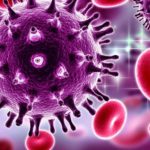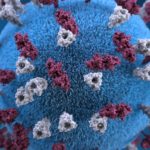Meningitis shots – how effective are they?
Meninges are the outer layer of the central nervous system and provide a protective covering for the brain and spinal cord. Inflammation involving the meninges is called meningitis. There are many causative factors related to meningitis. They include infections caused by viruses, bacteria, parasites, and fungi. Meningitis also occurs in association with certain types of cancer like breast cancer, bronchial cancer, leukemia, lymphoma, and auto-immune disorders like Sarcoidosis, Systemic lupus erythematosus, and Behçet’s disease. Meningitis can have an acute or a chronic presentation. There is a possibility to vaccinate against this disease but how effective are meningitis shots?
Features of Meningitis
Viral meningitis is the most common form of the disease. It is usually a self-limiting disease and requires no specific therapy. Patients are treated symptomatically and complete recovery is the rule.
Bacterial meningitis is caused by a multitude of bacteria. They include Meningococci and Pneumococci, Haemophilus influenza, Escherichia coli, Proteus and Group B streptococci. Bacterial meningitis occurs due to the presence of bacteria in the blood circulation. The source of infection can be an ear infection or sinusitis. The meningococcus and other common causes of meningitis are normally present in the upper respiratory tract. New strains are also acquired by the airborne route. Epidemics of meningococcal meningitis occur usually in cramped conditions. The bacteria invade through the nasopharynx, producing septicemia and meningitis.
Symptoms of meningococcal disease
Meningococcal infection commonly presents with features of high fever, chills, and rash. Features of headache, neck stiffness and seizures may appear on the development of meningitis. In severe cases, the patient may go into shock which rapidly proceeds to coma and death. The mortality rate is about 10% even with optimal treatment. One-fifth of patients who recover from serious illness may develop permanent hearing loss, paralysis of a limb, or brain damage.
Prevention of meningococcal infection: Meningococcus bacteria are of 13 different types. Of these, five types commonly cause meningitis. These include groups A, B, C, Y, and W-135. The relative importance of these five groups depends on geographic location. Vaccines are available for the prevention of disease caused by meningococci of groups A, C, Y, and W-135 but not group B which is the most common group isolated in many countries. Routine immunization of children is not recommended. The indications are listed below.
Types of meningitis vaccines
There are two major types of meningitis shots:
- Meningococcal polysaccharide vaccine (MPSV4)
- Meningococcal conjugate vaccine (MCV4)
The Centers for Disease Control and Prevention (CDC) recommendations for primary immunization of adults include:
- College freshmen living in a dormitory
- Military recruits
- Damaged or removed spleen
- Terminal complement deficiency
- Work environment predisposing to routine exposure to Neisseria meningitides e.g. microbiologist
- Traveling or residing in countries in which the disease is common




























